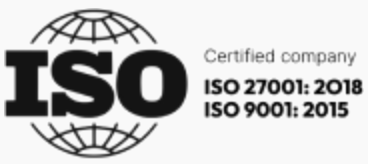Each year, the importance of keeping the environment healthy and in balance becomes clearer and clearer. Everyone (individuals and businesses) needs to do their part to keep the planet healthy.
One of the best ways to do this is through greentech. And in this post, we’re going to be exploring how businesses can implement greentech to create a more responsible, sustainable infrastructure throughout their workplace and supply chain.
What is greentech?
First, let’s talk about what greentech is. Sometimes referred to as “cleantech,” greentech is any kind of technology that helps reduce, mitigate, or reverse the impact of human activity on the environment.
If that sounds broad, it’s because it is. Greentech encompasses a broad sector of tech and a pool of solutions that is constantly growing. We’ll look at some specific examples in a minute, but it’s important to recognize that greentech can take many forms.
With that in mind, it’s clear that the importance of greentech isn’t implementing the “right” technologies but also making strides in your own workplace to make a difference. Setting goals, starting small, and making consistent progress matters most.
5 examples of greentech
Fortunately for the planet, there are many real-world examples of greentech out in the world. Below are just a handful of practical cleantech technologies that your business can implement or invest in.
Water filtration
Water filtration removes various chemicals, bacteria, and substances from water to make it safe for drinking, use, or the environment.
Several types of water filtration include membrane filtration, microbial fuel cells, and nanotechnology. None is necessarily better than the other. Instead, it’s about finding the right type of filtration for your needs.
Companies can use water filtration to make the water used in manufacturing safer for disposal, convert it back into drinking water, or reduce the number of plastics and chemicals added to the environment.
Ocean energy
Energy is an entire sector of greentech unto itself. While we already have several practical forms of clean energy, we’re constantly looking for even more ways to harvest energy sustainably.
Ocean energy is a promising new form of sustainable energy. This is the practice of harvesting energy from things like waves, changing tides, and currents.
Ocean energy is useful because it is a passive form of energy generation. Energy collection technology can be implemented along coasts and in the ocean, storing energy with minimal work to sustain the effort.
Non-fossil fuel vehicles
A less passive but more pragmatic form of energy collection and usage is non-fossil fuels in vehicles. Right now, that primarily means replacing fossil fuel-powered vehicles with electric vehicles.
Electric vehicles have little to no emissions, don’t require as many fluids or chemicals to run, and on the whole, present far fewer emissions.
That said, electric vehicles are far from a perfect solution. They still have a big impact on the environment while being manufactured, and they’re often charged with electricity created via fossil fuels, negating some of their positive impacts.
That’s not to say that non-fossil fuel vehicles are the wrong move. Instead, it’s about making them more sustainable, supporting their infrastructure, and steadily migrating the marketplace to be completely fossil-fuel-free.
Solar energy
Similar to ocean energy, solar energy is a passive way to collect and store energy. And unlike ocean energy, it can be implemented across continents. It’s also relatively affordable and, as time goes by, easier to integrate into existing and new energy grid architecture.
Of course, solar energy is not practical in every region. Some areas experience limited sunshine throughout the year, making solar energy implementation much harder.
Besides that, though, solar energy shows a lot of promise. Panels can be placed on top of homes, buildings, and across open fields. Panels can double as shade, cooling the surface beneath them while reducing our reliance on fossil fuels.
Converting waste to energy
Converting waste to energy is a new frontier for greentech. In the modern, industrialized world, we produce a lot of waste. And while some of it is recyclable and renewable, a lot of it isn’t.
Finding ways to convert that waste into energy could help reduce the footprint of landfills and give our trash more of a purpose. But how can this be done?
Waste generates a lot of energy. It outputs steam, heat, hot water, and electricity. These are all forms of energy we can store for later use. We can sort through the rest of our waste depending on the type of energy it can produce, giving materials a longer lifecycle.
The benefits of greentech for businesses
Not only are there several greentech technologies out in the world, but each of these technologies has unique and powerful benefits for businesses. To help you better understand the positive and practical impact that cleantech can have on your business, here are a few benefits you can expect from investing in it.
1. Operational efficiency
With the growing complexity and unpredictability of global supply chains, improving operational efficiency is a top priority for many businesses. Greentech can be an excellent tool for improving that efficiency.
For instance, optimizing logistics routes is a great way to cut down on fuel usage. And by starting a recycling program, businesses can reduce their dependence on raw materials suppliers. These help the environment while also making companies more independent.
2. Cost-savings
Greentech can also provide cost savings in a variety of ways. In the examples provided above, improved routes and reusing materials can lead to fewer expenses on fuels, drivers, and raw materials. It can also mean less waste, which helps conserve financial resources.
Then there’s the benefit of government incentives. In much of the developed world, implementing specific types of greentech can lead to financial support or rewards from governing bodies, depending on the laws in your region.
3. Increased safety and productivity
Safety and productivity are essential, especially in the manufacturing and construction sectors. Greentech helps improve safety and productivity by reducing the dangers of hazardous environments. Disposing of materials in an eco-friendly way and using environmental monitoring can prevent dangerous situations for workers.
Using greentech doesn’t just benefit the environment but your workers as well.
4. Promoting a circular economy
Cleantech can be used to promote a circular economy. A circular economy is one where waste is reduced or prevented altogether. Materials are used, disposed of, then reused again and again in a cyclical way.
While building the infrastructure and culture around this can take time, the result is better for businesses and individuals alike. It lowers costs, creates less supply chain uncertainty, and keeps businesses running green.
How to incorporate greentech into your business?
So, now that you have an idea of what greentech is, how it’s being used in the world, and how it can benefit your business and customers, let’s explore how you can start incorporating it into your business today.
Track energy consumption with IoT sensors
IoT sensors are internet-connected devices you can place around your workplace and equipment, providing real-time data on your energy usage.
This data can then be used to start reducing pollutants and reduce the energy you’re consuming. IoT may sound a bit cutting-edge, but it’s easy for most businesses to implement.
Use renewable energy
Another great way to start incorporating greentech into your business is to lean on renewable energy.
There are several ways to go about this. You can invest in solar panels, switch to an energy provider that uses renewable energy, choose supply chain partners that use clean energy, replace fossil-fuel-powered transportation vehicles with green alternatives, and so on.
Go paper-free
A relatively easy change you can make in today’s world is becoming paper-free. We live in a digital world, so it doesn’t make much sense to keep shuffling around paper copies of documents. Keeping your documents digital helps you cut down your company’s carbon footprint and helps you cut down on printing costs.
Work remotely
Working remotely can be a great way to invest in cleantech and reduce your business’s carbon footprint. Switching to a remote or hybrid work environment (partially remote, partially in-person) can be challenging.
But if you can pull it off, you’ll save environmental and financial resources by not transporting employees to work, reducing the size of your offices, and reducing the amount of air conditioning or heating and lighting you pay for at the office. Plus, remote work can help promote a better work-life balance for your whole company.
Take advantage of greentech with RebelDot
We know that embracing greentech in your business is easier said than done. Many businesses are ready to leap but aren’t sure where to start.
For help, reach out to RebelDot today. Our team of experts can provide insights and even help you develop bespoke solutions to get your business on track for a brighter future.






